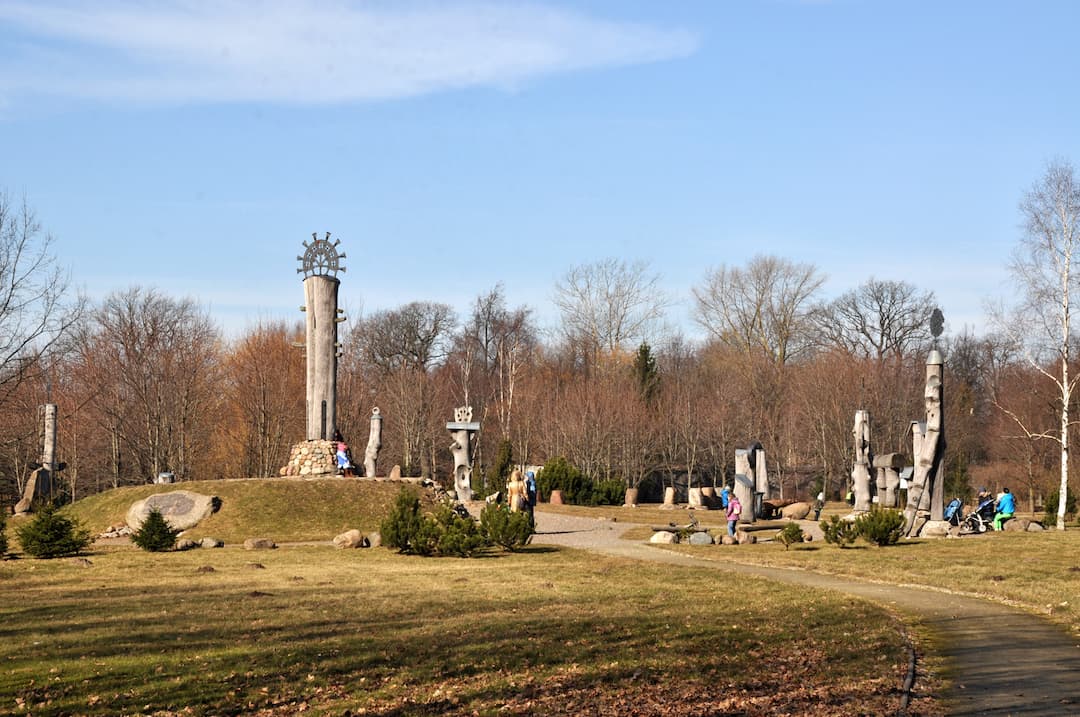Along the alleyways of the Tiškevičius park

For those yearning for nature, serenity, and peaceful walks, we invite you to the Kretinga Manor Park.
The tour starts at the Kretinga Manor Mansion. As soon as the visitors enter the territory through the gates, on the right, they will see the Manor Park Linden Tree Alleyway going along the fence. On the left, they will see the Path of Memory – slabs of granite with dates chiselled into them. They indicate the dates of when the city of Kretinga and the Kretinga Museum were established. The mythological Klibiai Stone with a flat-bed basin lies on the right. The First Manor Park Fountain stands renovated and functioning near the Manor Wing. This is its original location. Several oak trees decorate the front of the Manor Mansion, all of which have been standing there for several centuries. The thickest multi-trunk tree is 1.9 metres in width. Legends say that Juozapas Tiškevičius loved sitting down and resting under this exact oak tree. Another ritualistic store lies near the tree, which is the Padvariai Stone and Basin, also known as the Altar. Some smaller unknown rocks surround it. The top of the Kluonaliai Idol Pole projects out of the ground behind the oak tree.
To the south of the luxurious Manor Mansion, presently housing the Kretinga Museum, archaeologists have unearthed the ruins of the Second Fountain in the square between two alleyways. The form of the fountain is still recognisable – it is in the shape of an oval. At this moment, the tour brings the visitors a few centuries back, but if one advances southwards and crosses the alleyway, they shall find the Third Fountain, which, unlike the Second Fountain, brings them back to contemporary times as it is simply the ruins of sporting grounds built from asphalt, and not much more. However, to the south-east of this location lie the first ever Astronomic Calendar and Sundial in the Baltic States. This is a place of peace, knowledge, and romance.
From the Sundial, we return to the bridge between the First and Second Ponds via the Park Alleyway. On the left of the bridge, one can see a landscape view of the Second Pond and the Isle of Love, while the right presents a picturesque view of the First Pond and the renovated arch walking bridge, which was built during the times of the Count. The walking bridge leads towards the First Pond, where a small waterfall is flowing down a rocky niche and where the ruins of the former Pond Cascade can be found.
Along the upper shore of the First Pond lies the great Countess Sofija’s Stone of Feasts, named by the employees of the Kretinga Museum. It is believed that this was where Countess Sofija treated the children of the servants to sweets and other treats. A few hundred metres further down the shore lies the Waterfall Cave near the Stone of Love. The citizens of Kretinga believe that lovers have to confess their love for each other at the Stone of Love. Thus, the bond between the two will be strong and long-lasting. The Unnamed Stone Bench, the other half of the Stone of Love, lies on the opposite side of the pond, near the arch walking bridge.
If the visitors descend from the Waterfall Cave and proceed further along the First Pond, a panoramic view of the Manor Mansion opens up in front of the visitor’s eyes. Further to the right, visitors can climb on the Lookout Hill. A summerhouse used to stand on top of the hill, where the Count and his guests used to lounge. The tour ends at the foot of the Lookout Hill, near the Padvariai Village Cross, commemorating the 1940–1953 oppression of the Padvariai villagers.
If the tour was not too tiring and the will to continue the journey of knowledge is strong, we recommend participating in the other tour – getting to know the Kretinga Manor buildings and the pathways that lead to them.
Length of the tour: approx. 2.5 km. Duration: approx. 1.5 hours.